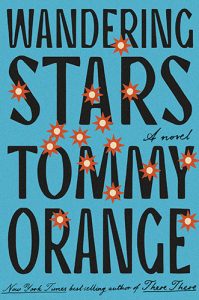Three Coyotes – Winter/Spring 2011
Volume 1 Number 1
Winter/Spring 2011
Biannual
Vanessa Willoughby
Joan Fox’s Editor’s Note, entitled “Variety and Vision,” states that this inaugural issue “features poems of survival, defiance and hope; images of our Western landscape; and, works offering a world of beings—mountain lions, coyotes, doves, dragonflies, cockroaches, fleas, cats, dogs, pelicans, humans, machines, sunlight.” Indeed, Three Coyotes highlights the beauty of the natural world, whether it is through the medium of prose, poetry, or photography.
Joan Fox’s Editor’s Note, entitled “Variety and Vision,” states that this inaugural issue “features poems of survival, defiance and hope; images of our Western landscape; and, works offering a world of beings—mountain lions, coyotes, doves, dragonflies, cockroaches, fleas, cats, dogs, pelicans, humans, machines, sunlight.” Indeed, Three Coyotes highlights the beauty of the natural world, whether it is through the medium of prose, poetry, or photography.
The opening work, Joan Burbick’s “Mirrors at Night,” explores the central theme of violence, especially the drive to kill that which is unfamiliar. Revenge is not seen as a form of beautiful justice, but rather a twisted symptom of xenophobia, racism, and discrimination. Burbick discusses this plague of “Southern white anger” during the early twentieth century; there seemed to be a campaign of hate and fear directed towards blacks, as the mantra of Manifest Destiny was only reserved for white Americans. She says, “The slightest hint that blacks would revenge 200 years of slavery was met with a ferocious blood lust to silence their pain.”
The Snake River, located in Oregon, is used as a reoccurring symbol, a flowing guide to a specific history of violence against minorities, a floating cemetery as well as a place to bury secrets. Although the essay has some lingering questions to be resolved, overall it is an interesting and eye-opening read, a brief attempt to make sense of a racially-fueled thirst for destruction and rage.
On the opposite end of the spectrum, Heidi MacDonald’s nonfiction essay, entitled “Bug Out,” begins with a scene showcasing a problematic dragonfly infestation and ends with a conversation between the narrator and a man named Bruce. MacDonald isn’t so much about grandiose language, but rather exposing the insecurities, anxieties, and quirks of certain individuals through their actions and reactions. Thus, the narrator comes across as trustworthy and reliable, a voice as soothing as a cool drink of water.
In terms of the visual, Chuck Fox’s photography portfolio is a stark slice of America, a catalogue of high-speed transportation and world-weary wanderers, in addition to ramshackle, abandoned buildings left for the idle hands of time. Fox is also largely self-taught, which makes the selected photographs even more wonderful and inspiring. The portrait of Janice from Washington recalls the black and white works of photography pioneers such as Dorothea Lange.
Of course, the journal would not be christened Three Coyotes without a few works inspired by the aforementioned animal. Meg Files fiction piece, “Coydog,” explores one young woman’s quest for personal identity, namely the search for her absentee father. In the end, the appearance of a wild, somehow ominous coyote sparks an epiphany, a realization that the search for her phantom father was really perverse idolatry in disguise.
In Steve Pavlik’s nonfiction piece, “Who is the Beast? Perspectives on Mountain Lions and Mankind,” Pavlik hopes to disassemble the common fear of mountain lions, openly criticizing state and government-funded animal control groups that seek to shoot first and ask questions later. Although Pavlik does not dismiss the danger of such animals, he hopes to promote education and awareness, which may help alleviate such wide-spread terror. He says, “I believe that animals like cougars possess basic rights that stand alone. These rights are apart from and independent of the desires of humans. They possess the inherent right to live and pursue their own purpose, a purpose perhaps known only to the Creator. In other words, a cougar has the basic right to be a cougar.” Perhaps some may read Pavlik’s essay as an inflated dissertation, a rallying cry created by an extremist, but if one looks past the passion, the author raises valid points.
Three Coyotes may not be the right cup of tea for every reader, but its juxtaposition of animal-rights advocacy and soul-searching create an engaging mixture that effectively highlights the spiritual and cerebral world and the natural world.
[www.threecoyotes.net]




